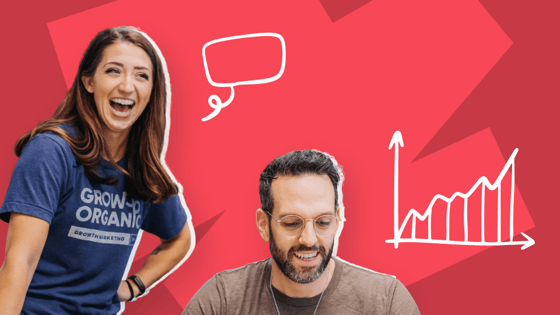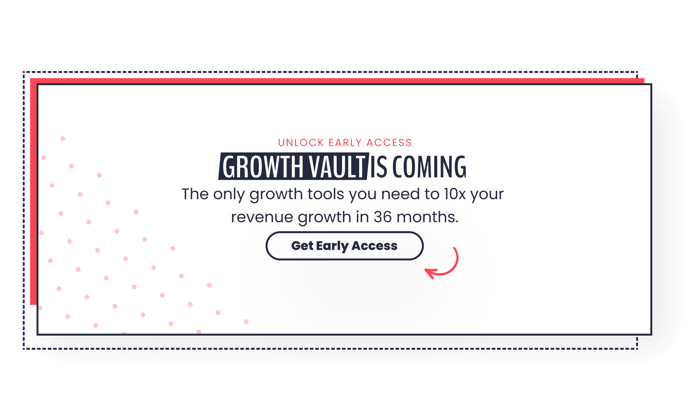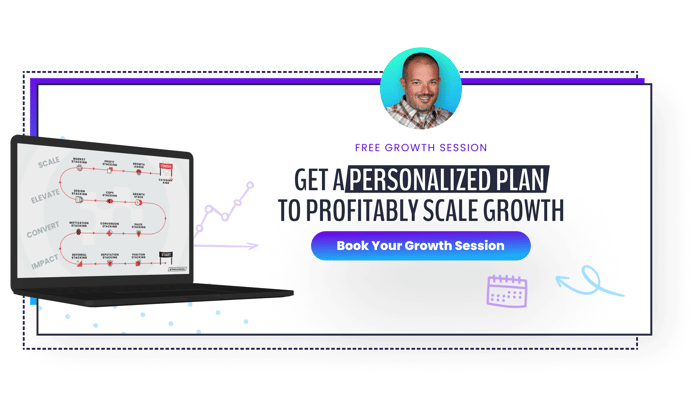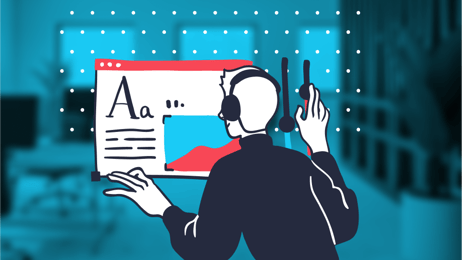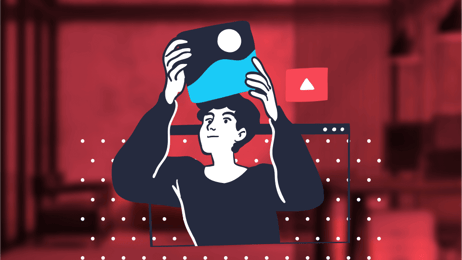Marketers are professionals at speaking to the masses.
They craft content that alters perspectives, even if the consumer doesn't know it's happening. But getting to that point is challenging. It's an uphill battle to earn the metrics you're after.
But there is a way you get there faster. If you implement these ten psychological tricks, you'll see your landing pages convert better, your copy grow more compelling, and your overall engagement increase.
Psychological Marketing Tricks to Add To Your Kit
Emotions are everything in marketing. If you can develop a deep, psychological understanding of how your customers think, you have a considerable advantage when it comes to telling your story.
All of these techniques can hold their own in certain elements, but by adding all ten to your marketing strategy, you'll find a dramatic improvement in your efforts.
VIDEO TRAINING
Get The Growth Marketing Playbook.
Learn to plan, budget, and accelerate growth with our exclusive video series. You’ll discover:
- The 5 phases of profitable growth
- 12 core assets all high-growth companies have
- Difference between mediocre marketing and meteoric campaigns
Thanks for submitting the form!
We'll review the information you've submitted and respond to you just as soon as possible.
1. The Framing Effect
People arrive at your site with a set of predefined notions. If you can influence what those notions are, you'll have a better chance of converting on your site.
Whether you call it 'priming' or 'framing' the goal is the same: position your product so customers are more receptive to your message.
This is the same reason you see "8 out of 10 dentists recommend" vs. "2 out of 10 dentists don't recommend." Marketers are establishing that framing effect because it has a direct impact on how a consumer perceives that item.
A study, published in the Journal of Consumer Research, found when individuals were primed with information about a specific feature, it held more value when they were presented different options later.
For example, in car shopping, if a consumer is given an idea about what "good" pricing is for a vehicle, that'll be the main criteria he looks at on the lot. If another consumer is primed with the safety features, that piece of information will be taken into consideration over the price tag.
The hard part is deciding what frame to use with your customers. If they're aware of your product, open with why yours can help them best. If they're unaware they even have a problem, but they sense something is wrong, help them identify what that is, and offer your product as the solution.
2. Verbatim Effect
The verbatim effect explains why people are more likely to remember the gist of your pitch than the exact words.
This effect is why it's essential to structure your content in a manner that promotes recall. This means keeping your section headers clear and, depending on the type of content, including benefits with each. If your header can serve as a general summary, it'll make the material stick that much better.
Using catchy phrasing may make you feel hip, but it's doing nothing to improve how much the reader will remember from the work. And since many readers will skim an article to decide if it's worth reading, effective headings will show the value you're providing.
3. Reciprocity
Humans have the urge to return favors. Yes, there are some sociopaths among us, and it's a significantly stronger desire in some cultures, but the temptation is founded deep inside every person. If we're given something and don't offer something else in return, we're left feeling uncomfortable.
Because most engagement is online, the first thing you need to do is humanize your brand with your attractive character. Then, start giving stuff away. We recommend that "stuff" be value from your content. With our approach to customer-centric marketing, you put the customer first as you nurture them through their journey, and giving them answers to their questions will increase their commitment to your brand.
It's important to understand that the perceived value of an offer lies in the eye of the beholder. So while some people may think giving you their email address is well-worth the content you've provided, you need to earn that from everyone. By increasing value, you're strengthening the chances of reciprocity.
And don't always feel pressured to ask for something. It's a good practice to put CTAs at the end of your blog posts because there's a chance people convert. But sometimes, whether through email, social, or on your site, you can build value by offering without asking for something in return.
4. Clustering
If you've ever taken a course on studying or tried to improve your efficiency in the area, you've probably heard of this method. Clustering is the act of putting similar pieces of information together so you can remember it better.
When the brain reaches into your long-term memory to recall something, it searches through all like-instances. It's believed this happens because it's a more efficient way to store everything. You wouldn't put your wrenches on separate shelves, you'd want them together so you can find the specific size while looking at all of them.
One study focused on semantic clustering. The authors gave subjects a list of 15 randomly assorted words and asked them to remember them. Afterward, they gave them a different list of 15 words but grouped them into similar topics. The data showed a noticeable increase in recognition in the second test.
The most effective manner to use this is to put like features or benefits together on your landing pages, and more like information under the same sections in your content. Bulleted lists can be a simple way to do this.
5. Fear of Missing Out
Social proof has been covered at length, but it's one of the most powerful ways to influence a psyche. It touches the part of us that demands to be included. One of the most effective methods it does this is through the Fear of Missing Out (FOMO) effect.
Humans don't want to be absent from the rewarding experiences they see others having. It builds into subconscious anxiety that plagues them until they join in.
Because we've always been tribal, we take value in the opinions of others. When our peers validate a product's worth, we trust their insights, believing they wouldn't recommend something unless it was truly beneficial to the group.
Nielsen conducted a study that found 83% of consumers trust recommendations from friends and family. If you want to capitalize on that statistic, introduce testimonials and reviews to your site, as well as social sharing buttons.
6. Loss Aversion
People don't want to lose what they already have. Instead, they'd rather hang on to something rather than gain something new. This is called loss aversion.
One study within the education system of Illinois proved its efficacy. Half the teachers were given their bonus at the start of the school year and told they could keep it if student performance increased. The other half got their normal bonus at the end.
The former half saw an almost 10% increase in test scores.
Your copy can be aligned to speak to this, mentioning what customers have to lose if they don't accept your offer. You can also incorporate it by reminding consumers about expiring gift vouchers. That desire to maintain an opportunity for a discount is often more valuable than what they'd spend on your product.
7. Decoy Effect
People will purchase the cheapest option unless they feel they're getting more value from a different purchase, whether it's perceived or real. If you can inject an additional purchasing option that doesn't offer more value for the price, it increases the perceived value of the other two.
Dan Airley looked at the Economist's pricing options. An online subscription cost $59, and for both online and print, it cost $125. The Economist had added a third option. For just the print version, it would cost $125.
He ran a study with his students at MIT based on the same. When the third option wasn't presented, students selected the cheapest option. When the third was available, they selected the one that had a higher perceived value thanks to the decoy.
Adding that third option to your landing pages could prop the offer you want the customer to accept, and costs you nothing to include.
8. Scarcity
If supply is scarce, humans want a piece. There's a certain power that comes with owning something that not everyone can. It's what drives the luxury market. But even with simple things, that innate desire is in all of us.
Violinist Joshua Bell is well known for filling venues. However, when he decided to play a free "concert" in the Washington, D.C. subway, he had only seven out of thousands of people stop to listen. Nothing was different about his playing, except there was no limit to how many seats could be filled for the performance.
A different study had 200 undergraduates rate the value and attractiveness of cookies. One jar was full of the cookies, the other almost out. They were told the reasoning behind the lesser jar was high demand or an accident. A large majority of the participants found the scarce cookies to be more valuable.
When implementing this in your marketing, understand there's a significant difference between saying, "there's only a few in total" vs. "due to popular demand, there's only a few left." The former is too ambiguous and unless you have a highly desirable brand, you're not going to pull as many customers as you would with the latter.
9. The Frequency Illusion
This marketing idea is also known as the Baader-Meinhof Phenomenon.
The phenomenon involves the mysterious way you start to notice things after you've become more aware of it. For example, when you're considering buying a red car and then you start to notice them every one.
It's the same reason people think Siri and Alexa are listening to their conversations. They're not actually listening to everything you say (I hope), but you've become aware of something, so you'll naturally see it popping up.
The underlying causes of the Frequency Illusion are selective attention and confirmation bias.
The use of pixels has created this effect online. When someone visits your site and becomes aware of your brand, they start seeing your ads around the web. This creates the illusion that you're a larger brand and that your influence reaches further than it may actually.
10. Mere Exposure Theory
Mere Exposure Theory explains why people develop preferences based on their familiarity with something.
An interesting study from 1992 explored the theory by have four women of similar appearance attend a college class. One woman didn't attend at all, one went five times, one for ten, and the last for 15. At the end of the course, the professor had his students rate the women on different variables. The woman who'd attended 15 times saw the best numbers, the woman who'd been there ten times seeing the next, and so on.
Getting more exposure will increase the likelihood someone associates with your brand, just because they've seen it more than others.
Using Human Psychology to Your Advantage
Humans are generally wired the same, and that gives you a specific advantage in your marketing. So long as you're not using them unethically, these psychological factors can add an edge to your strategy and help you stand apart from the competition.
